Scott Kinabalu 2
Test Location: Marin, CA
Test Duration: 40 miles (so far)
Stated Stack Height (Men’s): 29 mm (heel) / 21 mm (forefoot)
Stated Heel-to-Toe Drop: 8 mm
Stated Features:
- “Versatile Traction” multi-layered outsole
- Dual density lightweight “Kinetic Foam”
- “eRIDE” rocker shape midsole
- Engineered mesh upper
- TPU “Support Cage”
- Toe guard
Stated Weight per Shoe (US Men’s Size 9): 290 g / 10.2 oz
Size Tested: US Men’s 8.5 / EU 42
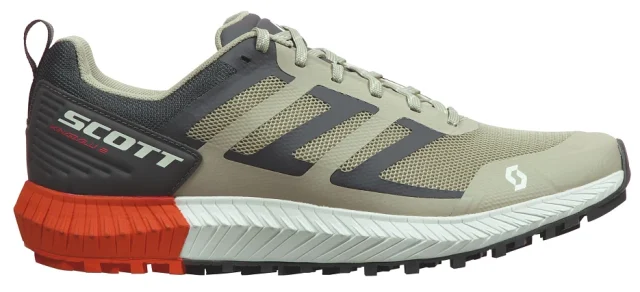
Blister Measured Weight per Shoe (US Men’s Size 8.5):
- Shoes + Laces: 273 g (left) & 274 g (right)
- Insoles: 23 g (left) & 23 g (right)
- Total: g 296 (left) & 297 g (right)
MSRP: $150
Reviewer: 5’9”, 150 lbs / 175 cm, 68 kg
Intro
Scott has steered further into the trail space in recent years by expanding their offerings to build out a lineup of trail shoes that’s comprehensive, on par with what brands like La Sportiva and Scarpa are doing. The Kinabalu 2 stands out as their “most versatile” model, an everyday training option positioned as a utility shoe for runners of all levels. I recently picked up a pair, curious about the claims Scott layers onto the Kinabalu 2. I’ll wait to make a pronouncement after I get some more miles in the shoe, but for now, I’ll detail the Kinabalu 2’s build and offer up my initial impressions.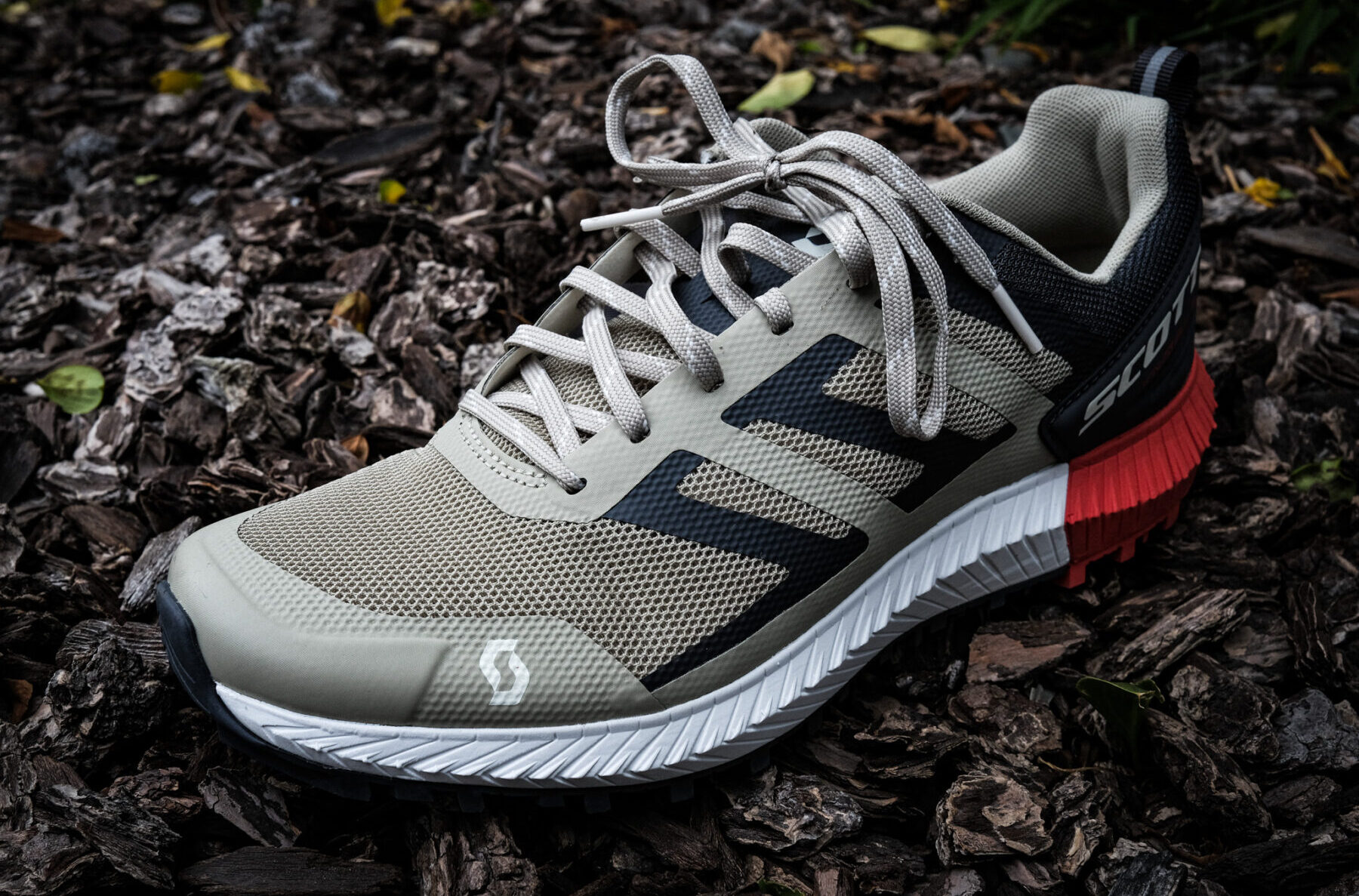
Fit & Features
When brands designate one of their models as a “do-it-all” shoe, I tend to recoil. This concept is a fiction in trail running, a sport whose extremes arguably reach further distances than road running. You’d likely never wear the same trail shoe for a VK or 20k as you would a 100-miler, yet I know several road runners who wear the same road shoe for a 5k that they do in a marathon. Most of the time, you don’t want a model that claims it can do it all; you want the one that’s right for the job. Still, most of us can’t have an endlessly expanding shoe quiver.
Call it semantics, but I’m more bullish on trail shoes that claim “versatility.” Most, in my experience, land somewhere in the “generalist” category, which we defined in our Trail Running Glossary of Terms as follows:
“Many shoes resist specialization by incorporating features from different categories, in turn making them more versatile than models designed to excel in a particular context. So-called ‘generalist’ shoes usually temper extremes by featuring fairly average, more middle-of-the-road stack heights / weights, modest outsoles, and accommodating fits. They tend to be pretty capable across a wide range of surface types and distances, which makes them a great option for daily training and for runners who want to keep their shoe quiver to a reasonable size.”
Scott’s Kinabalu 2 is very much in line with this description. It’s uncreative in the best way, relying on an average 29 mm / 21 mm stack height, 8 mm heel-to-toe drop, and neutral platform to establish a fit that I think will be familiar to a lot of runners. Compared to the Ultra Carbon RC, the Kinabalu 2 shares a comparable amount of arch support both medially and laterally through the midfoot, but flares out more in the forefoot, creating a toe box that’s still tapered compared to models from Topo / Altra, but more commodious than the typical shoe from Salomon (e.g., the Salomon Sense Ride 5). Through the heel, the Kinabalu 2’s 8 mm drop helps shift weight toward the front of the shoe and offload stress on the Achilles tendon, so its heel collar / counter is modestly designed and appeals to comfort more than strictly function.
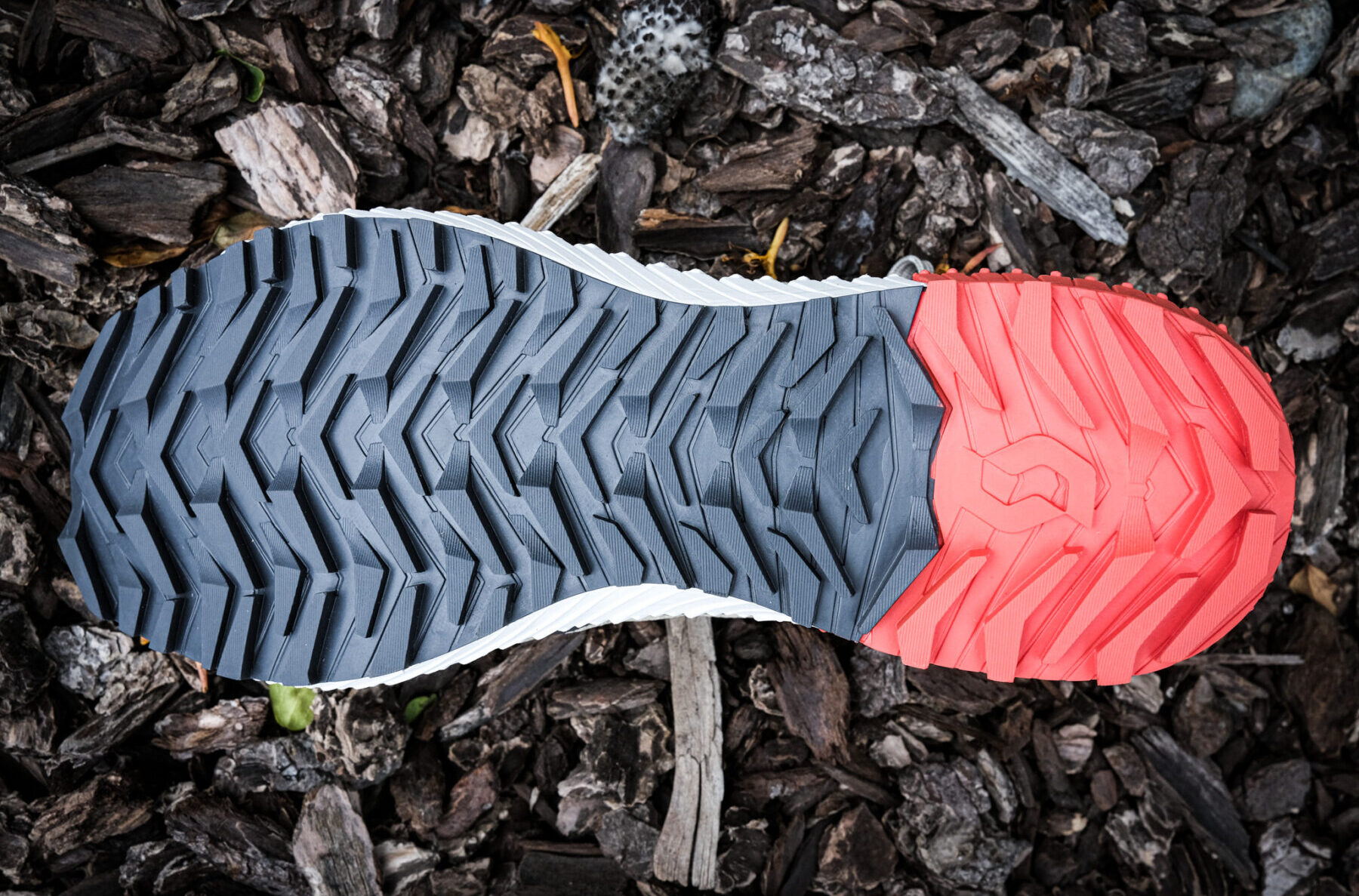
Not every shoe needs to be an attempt to reinvent the wheel. At least early on, the Kinabalu 2’s construction benefits from following established conventions. Its upper is made from perforated mesh that’s soft against the foot; TPU overlays — what Scott calls the Kinabalu 2’s “Support Cage” — run along each side of the midfoot, while a TPU toe rand provides additional protection; a non-gusseted mesh tongue sits underneath a traditional lacing system. Proprietary terminology aside, the Kinabalu 2’s upper reflects the shoe’s workmanlike attitude; it’s unfussy, to the point, and familiar.
Reading the Kinabalu 2’s stated features on Scott’s website after wearing it around my house for a few minutes, I was admittedly a bit confused by how the shoe’s midsole is described compared to how it felt on foot. High heel-to-toe differentials and rockered midsoles don’t normally coexist, but Scott claims the Kinabalu 2 has both in the form of an 8 mm drop and a “eRIDE” rocker. I immediately flagged the drop as one of the shoe’s defining features, but at no point so far have I really noticed its stated rocker (which looks more significant at the front, rather than the heel), a design element generally reserved for helping models with lower heel-to-toe drops improve efficiency. Still, the shoe’s dual-density lightweight “Kinetic Foam” feels plenty spry as is, so I’m not sure a more pronounced rocker midsole would be of any benefit.
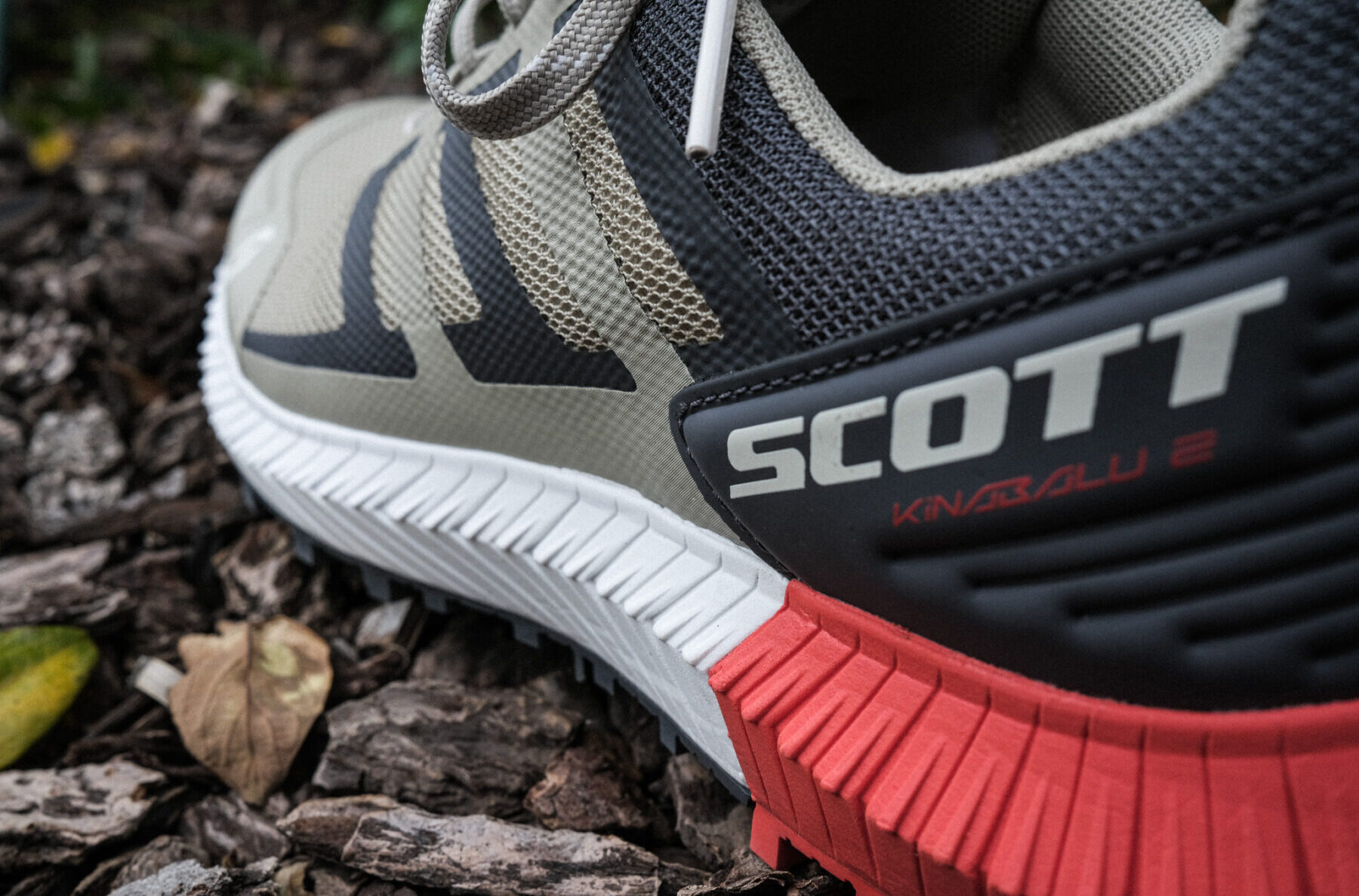
Kinetic Foam is made from EVA, a very popular but somewhat ambiguous material used all over the industry. Compared to, say, the Hoka Speedgoat 5, the Kinabalu 2’s midsole feels much denser and there’s less of it, so the Kinabalu 2’s ride is notably harsher. As a point of comparison, I’d liken its balance between cushion and energy return to something approximating the Saucony Peregrine 13 and/or the Saucony Xodus Ultra 2, though the Kinabalu 2 is quite a bit heavier. For context, here’s how the Kinabalu 2’s stated weight compares to the stated weights for some other similar models. All weights are based on a US Men’s Size 9.
260 g / 9.2 oz — Saucony Peregrine 13
272 g / 9.6 oz — Saucony Xodus Ultra 2
284 g / 10.0 oz — Topo Athletic Mtn Racer 2
289 g / 10.2 oz — Hoka Speedgoat 5
290 g / 10.2 oz — Scott Kinabalu 2
295 g / 10.4 oz — Hoka Mafate Speed 4
298 g / 10.5 oz — Brooks Cascadia 16
300 g / 10.6oz — Altra Lone Peak 6
300 g / 10.5 oz — La Sportiva Jackal
310 g / 10.9 oz — La Sportiva Akasha II
310 g / 10.9 oz — Dynafit Ultra 100
323 g / 11.4 oz — Nike Wildhorse 8
Scott doesn’t shortchange the Kinabalu 2 when it comes to its outsole, electing to go with full-length rubber studded with chevron-shaped lugs that are tightly grouped together. In a landscape in which more and more brands are leaving sections of midsole foam exposed in an effort to conserve weight, it’s somewhat refreshing to see Scott concede a few grams in favor of a more aggressive (and likely more durable) tread pattern. I’ve yet to take the Kinabalu 2 on terrain that really challenges its grip, but when I inevitably do, I’ll make sure to include my takeaways in my long-term writeup of the shoe.
Things We’re Curious About
- The Kinabalu 2 is a generalist model that espouses versatility; but like any shoe, it will naturally prefer some surfaces / distances to others. What those are remains to be seen.
- Scott cites the Kinabalu 2’s eRIDE rocker shape midsole as a feature that increases running efficiency. I’m having a hard time getting a sense for that early on. Will the shoe’s rockered shape have more of an effect after a thorough break-in period?
- As often happens, models dubbed “versatile” occupy an ambiguous space in the marketplace, with no clear audience in mind. That begs the question, who is the Kinabalu 2 for, exactly?
Bottom Line (For Now)
“Versatility” is common parlance in the footwear industry, a buzzword that’s more often than not used to obscure a shoe’s lack of purpose than to describe it. But most examples that fall into this camp, known as “generalists,” can offer advantages over shoes conceived specifically for a given surface / distance — when designed thoughtfully. Scott’s Kinabalu 2 is characterized by a workmanlike construction that’s unpretentious about what it is — a well-rounded trail shoe free of surprises that aims to deliver in a bunch of different settings. Whether or not this remains the case after a full round of testing will be the subject of our forthcoming full review.
FULL REVIEW
Intro
If you’ve been following our latest running shoe reviews, you’ll know that I recently wrote about Scott’s carbon-plated super-shoe, the Ultra Carbon RC. As a trail racer, that model served as an opportunity for Scott to show off the technical prowess they’re known for. It features plenty of high-end materials aimed at squeezing every ounce of performance out of the runner wearing it. But at $230, with a pretty specific fit, and being mainly intended for competition, the Ultra Carbon RC is rightfully not for everyone.
Fit
When brands designate one of their models as a “do-it-all” shoe, I tend to recoil. This concept is a fiction in trail running, a sport whose extremes arguably reach further distances than road running. You’d likely never wear the same trail shoe for a VK or 20k as you would a 100-miler, yet I know several road runners who wear the same road shoe for a 5k that they do in a marathon. Most of the time, you don’t want a model that claims it can do it all; you want the one that’s right for the job. Still, most of us can’t have an endlessly expanding shoe quiver.
Call it semantics, but I’m more bullish on trail shoes that claim “versatility.” Most, in my experience, land somewhere in the “generalist” category, which we defined in our Trail Running Glossary of Terms as follows:
“Many shoes resist specialization by incorporating features from different categories, in turn making them more versatile than models designed to excel in a particular context. So-called ‘generalist’ shoes usually temper extremes by featuring fairly average, more middle-of-the-road stack heights / weights, modest outsoles, and accommodating fits. They tend to be pretty capable across a wide range of surface types and distances, which makes them a great option for daily training and for runners who want to keep their shoe quiver to a reasonable size.”
Scott’s Kinabalu 2 is very much in line with this description. It’s uncreative in the best way, relying on an average 29 mm / 21 mm stack height, 8 mm heel-to-toe drop, and neutral platform to establish a fit that I think will be familiar to a lot of runners. Compared to the Ultra Carbon RC, the Kinabalu 2 shares a comparable amount of arch support both medially and laterally through the midfoot, but flares out more in the forefoot, creating a toe box that’s still tapered compared to models from Topo / Altra, but more commodious than the typical shoe from Salomon (e.g., the Salomon Sense Ride 5). Through the heel, the Kinabalu 2’s 8 mm drop helps shift weight toward the front of the shoe and offload stress on the Achilles tendon, so its heel collar / counter is modestly designed and appeals to comfort more than strictly function.
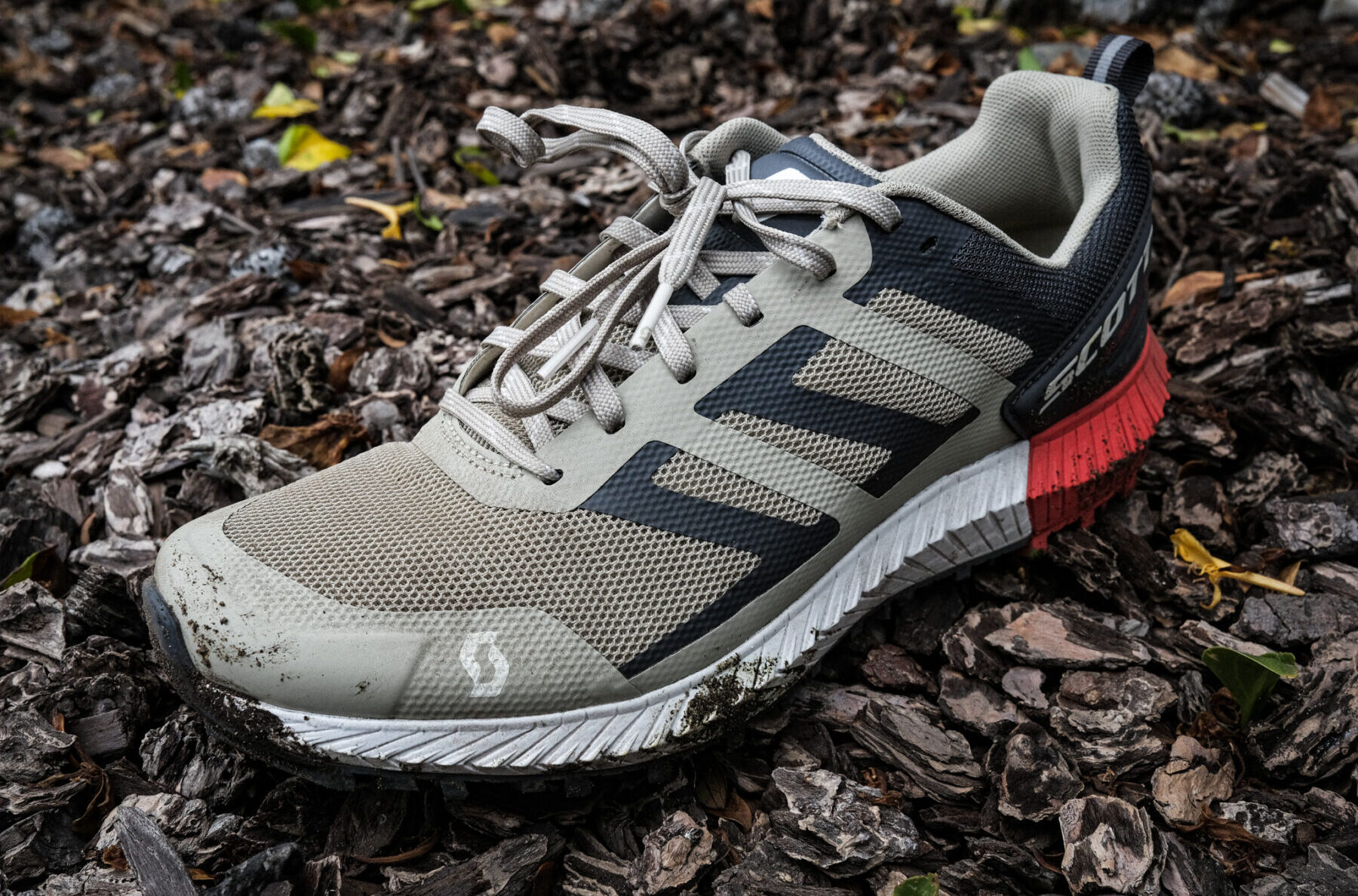
Weight
I like to use 300 g for a US Men’s Size 9 as an arbitrary ceiling that I think most trail shoes’ weights should aspire to sneak in under. It’s a nice round number that acts as a kind of tell; most models that weigh less than 300 g arrive there intentionally and I like that consideration. At 290 g for a US Men’s Size 9, the Kinabalu 2’s weight appeals to my slightly neurotic standard and makes sense given its construction and intended use. For context, here’s how the Kinabalu 2’s stated weight compares to the stated weights for some other similar models. All weights are based on a US Men’s Size 9.
260 g / 9.2 oz — Saucony Peregrine 13
272 g / 9.6 oz — Saucony Xodus Ultra 2
284 g / 10.0 oz — Topo Athletic Mtn Racer 2
289 g / 10.2 oz — Hoka Speedgoat 5
290 g / 10.2 oz — Scott Kinabalu 2
295 g / 10.4 oz — Hoka Mafate Speed 4
298 g / 10.5 oz — Brooks Cascadia 16
310 g / 10.9 oz — La Sportiva Akasha II
310 g / 10.9 oz — Dynafit Ultra 100
323 g / 11.4 oz — Nike Wildhorse 8
The Kinabalu 2 is effectively the same weight as the Hoka Speedgoat 5, a shoe I’ve celebrated extensively in the past. While the two are intended for similar roles, they carry their weight very differently. Like the Scott Ultra Carbon RC, the Kinabalu 2’s midsole uses a foam compound that’s much denser than the lightweight EVA Hoka is a huge proponent of. Accordingly, the Kinabalu 2 comes across as body-heavy at times, especially in contrast to its paired-down upper construction. A full-length rubber outsole only exacerbates this “issue.” Still, it’s not enough of an issue to drag the shoe down entirely, and the positives that are a direct result of the denser midsole compound / full-length outsole need not be discounted (more on that in a moment). If you’re keen on wearing a lighter, still capable model from Scott, check out some of the other options in our latest brand guide.
Upper
Not every shoe needs to be an attempt to reinvent the wheel. The Kinabalu 2’s construction benefits from following established conventions. Its upper is made from perforated mesh that’s soft against the foot and flexible; TPU overlays — which Scott calls the Kinabalu 2’s “Support Cage” — run along each side of the midfoot, while a TPU toe rand provides additional protection; a non-gusseted mesh tongue sits underneath a traditional lacing system. Proprietary terminology aside, the Kinabalu 2’s upper reflects the shoe’s workmanlike attitude; it’s unfussy, to the point, and familiar.
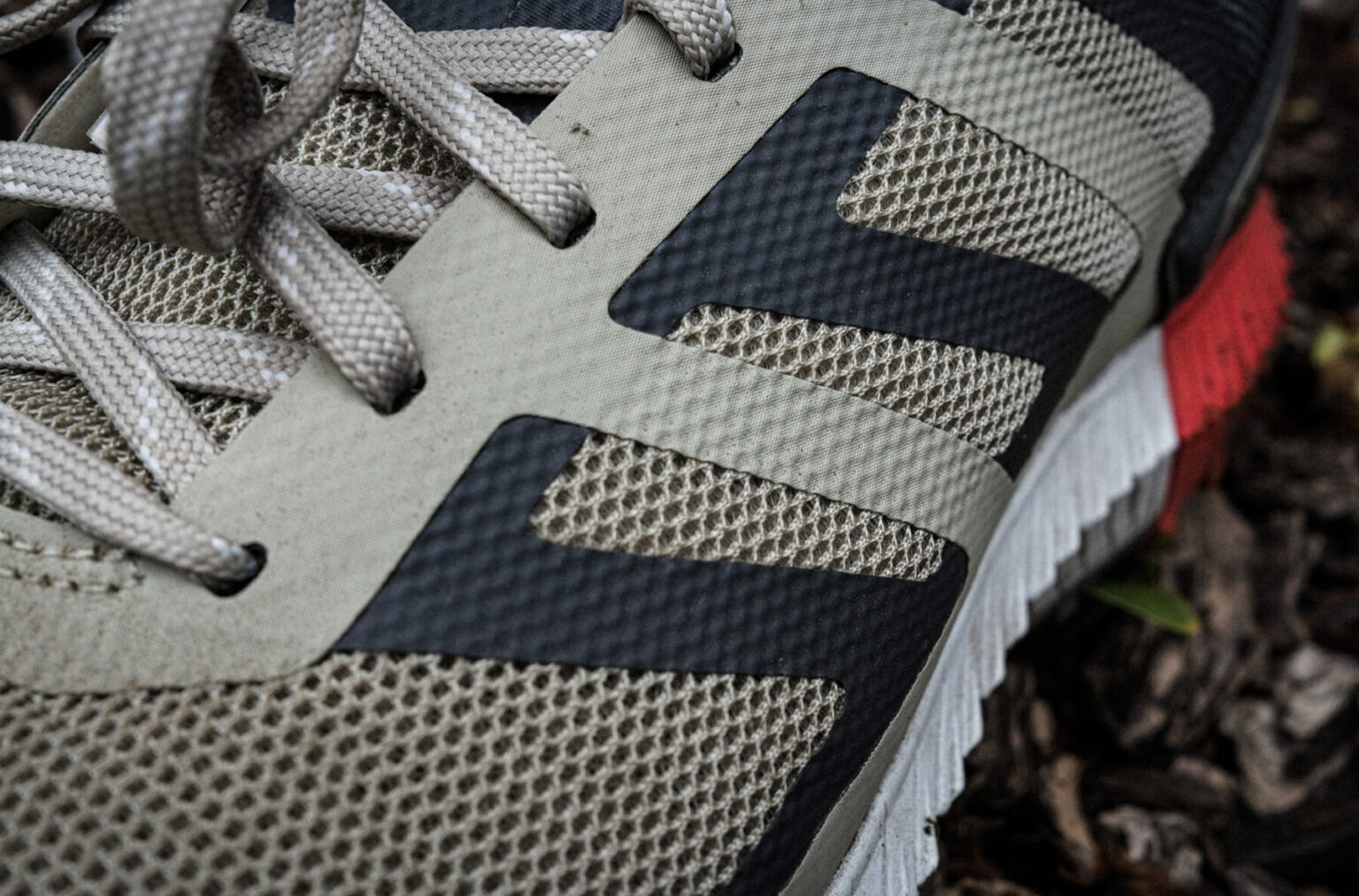
I’ve already faulted Scott for not incorporating a gusseted tongue into the Kinabalu 2’s upper, which is something that I think should be the standard for most trail shoes these days. I won’t spend time rehashing that hangup here, outside of once again calling attention to it. A floating tongue wasn’t a deal breaker for me, largely because it didn’t infringe on other areas of the upper that I enjoyed while testing. Its flexibility provided a nice balance to what I’d consider a pretty rigid midsole, encouraging movement at toe-off. I also appreciated Scott’s “Support Cage” — though subtle, I think it helped keep my foot in place while maneuvering over technical terrain.
Shifting attention to the rear of the shoe, Scott keeps with a conservative design and outfits the Kinabalu 2 with a plush ankle / heel collar that tapers back into a semi-rigid heel counter complemented by a short pull-tab. Because the shoe’s 8 mm drop theoretically reduces strain on the heel compared to models with less of a drop, this area smartly avoids over-engineering. I’ve taken to testing the heel constructions of shoes by seeing how they fare climbing 2500 ft to the top of Mt. Tamalpais. The route to the summit begins on a road that’s gently graded before transitioning to trails of various inclines, a mixed profile that puts different levels of stress on the heel. The Kinabalu 2 kept my foot in place consistently the entire way up.
Midsole
In my initial impressions of the Kinabalu 2 I noted that I had trouble discerning the shoe’s “eRIDE” rocker, a feature that felt a little out of place in a model that already has a relatively high heel-to-toe drop. High heel-to-toe differentials and rockered midsoles don’t normally coexist, largely because they’re kind of redundant — both aim to transition the foot quickly through its gait cycle, from heel to toe. While I will concede that there’s a slight rockered shape to the Kinabalu 2 concentrated around the forefoot, its effects never really materialized over the roughly 40 miles I’ve spent in the shoe. That’s not to say the Kinabalu 2 lacked the efficiency Scott cites, but I think the shoe’s 8 mm drop probably deserves more credit for it than anything else.
As for the actual midsole composition, Scott uses Kinetic Foam made from EVA, a very popular but somewhat ambiguous material used all over the industry. Compared to, say, the Hoka Speedgoat 5, the Kinabalu 2’s midsole feels much denser and there’s less of it, so the Kinabalu 2’s ride is notably harsher. As a point of comparison, I’d liken its balance between cushion and energy return to something approximating the Saucony Peregrine 13 and/or the Saucony Xodus Ultra 2, though the Kinabalu 2 is quite a bit heavier. The tradeoff between using a denser foam instead of something airier takes the form of durability and protection for energy return and ground feel. Which combo you may value more is largely subjective. For my preferences, I would have liked to see Scott use a slightly softer foam because I think the Kinabalu 2’s range is limited by a lack of cushioning as it is now. For that reason, I’d probably limit the distance of my runs in the shoe to 15 miles.
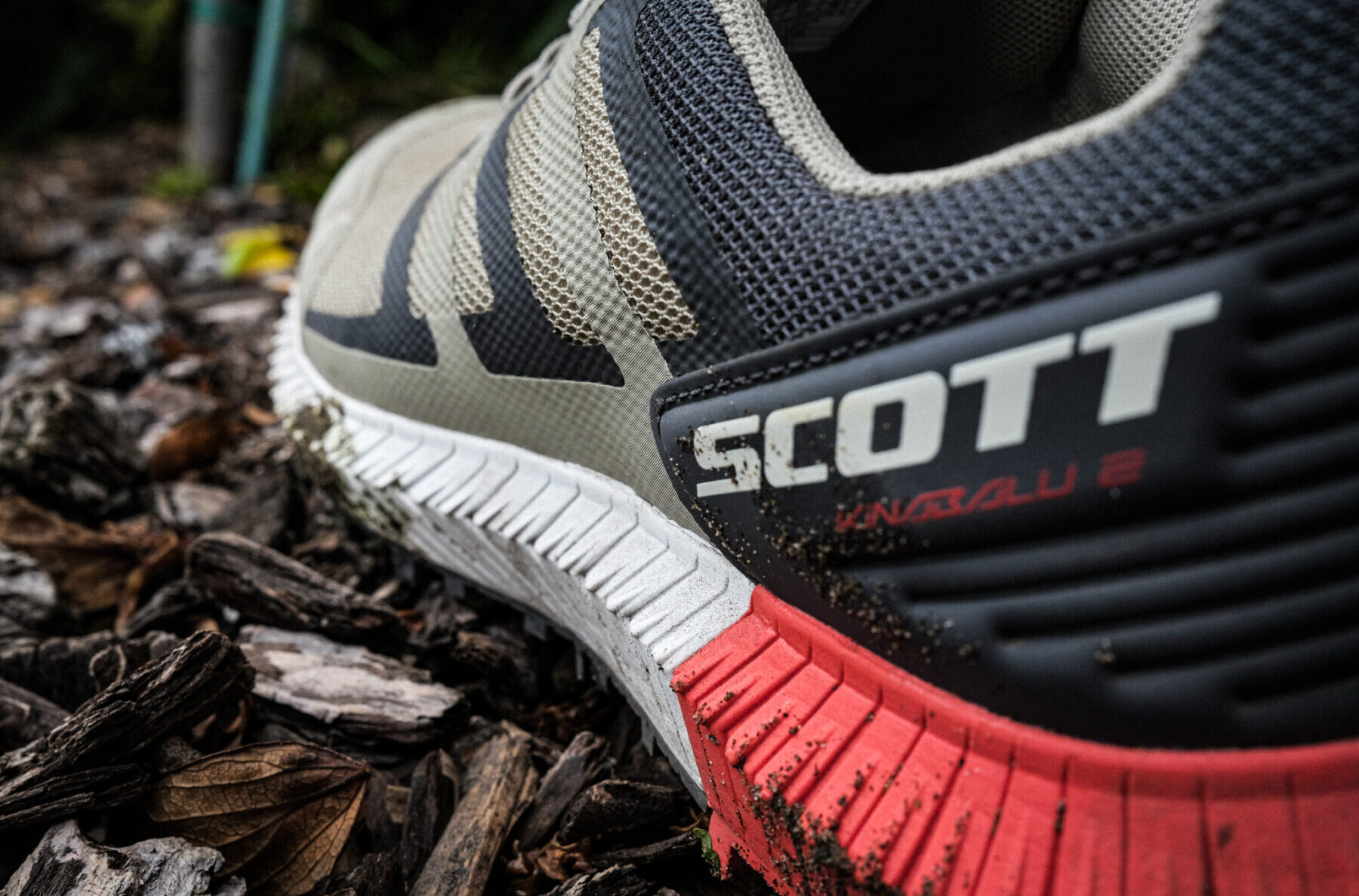
Outsole
Full-length rubber outsoles seem to be going the way of the dodo, at least for a lot of generalist trail shoes, with more and more footwear brands electing to leave windows of exposed midsole foam in their shoes’ outsoles to ostensibly save weight. For certain weight-obsessed shoes and models intended for milder terrain, I think this design decision makes a ton of sense; however, for models like the Kinabalu 2, which promotes versatility as its central concern, a full-length rubber outsole is not only appropriate, but I’d argue necessary.
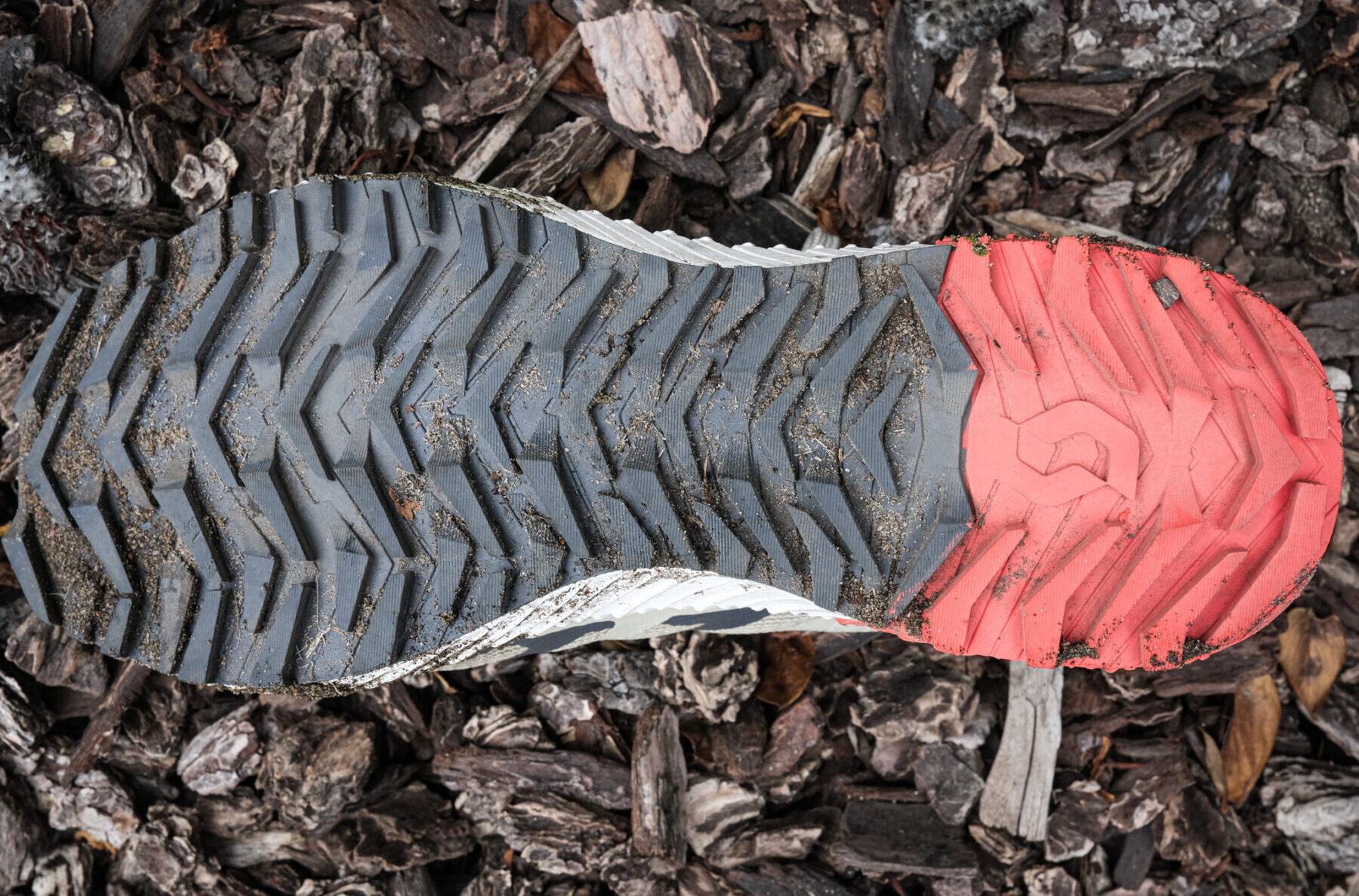
On Trail
Scott is pretty definitive in they’re billing of the Kinabalu 2 as a versatile training companion. Their commitment to this position largely informed how I tested the shoe out on the trails. I’ve settled into a nice routine of putting basically every trail shoe I review through a pretty similar testing process. In most cases, that takes the form of 6 days of running a week with one workout (usually some type of hill interval), a collection of social runs, and a lengthier effort between 3 and 5 hours. This structure confronted the Kinabalu 2 with the varied demands a well-rounded model, generalist model should be able to handle.
One of the several questions I had for the Kinabalu 2 prior to testing had to do with where its strengths lie. Most models that claim “versatility” end up biasing in a certain direction, whether that be non-technical trail, shorter distances, etc. Right off the bat, it became clear that the Kinabalu 2 would struggle with anything approaching ultra-distance runs. While its 8 mm drop lent itself to a more efficient foot strike for my running form, I struggled with how dense its Kinetic Foam felt on runs that pushed past roughly 12 miles in length. Unfortunately, it hasn’t yet softened as I had suspected it might, retaining its rigidity in a fashion similar to the Ultra Carbon RC (though the latter’s carbon plate makes it far more inflexible).
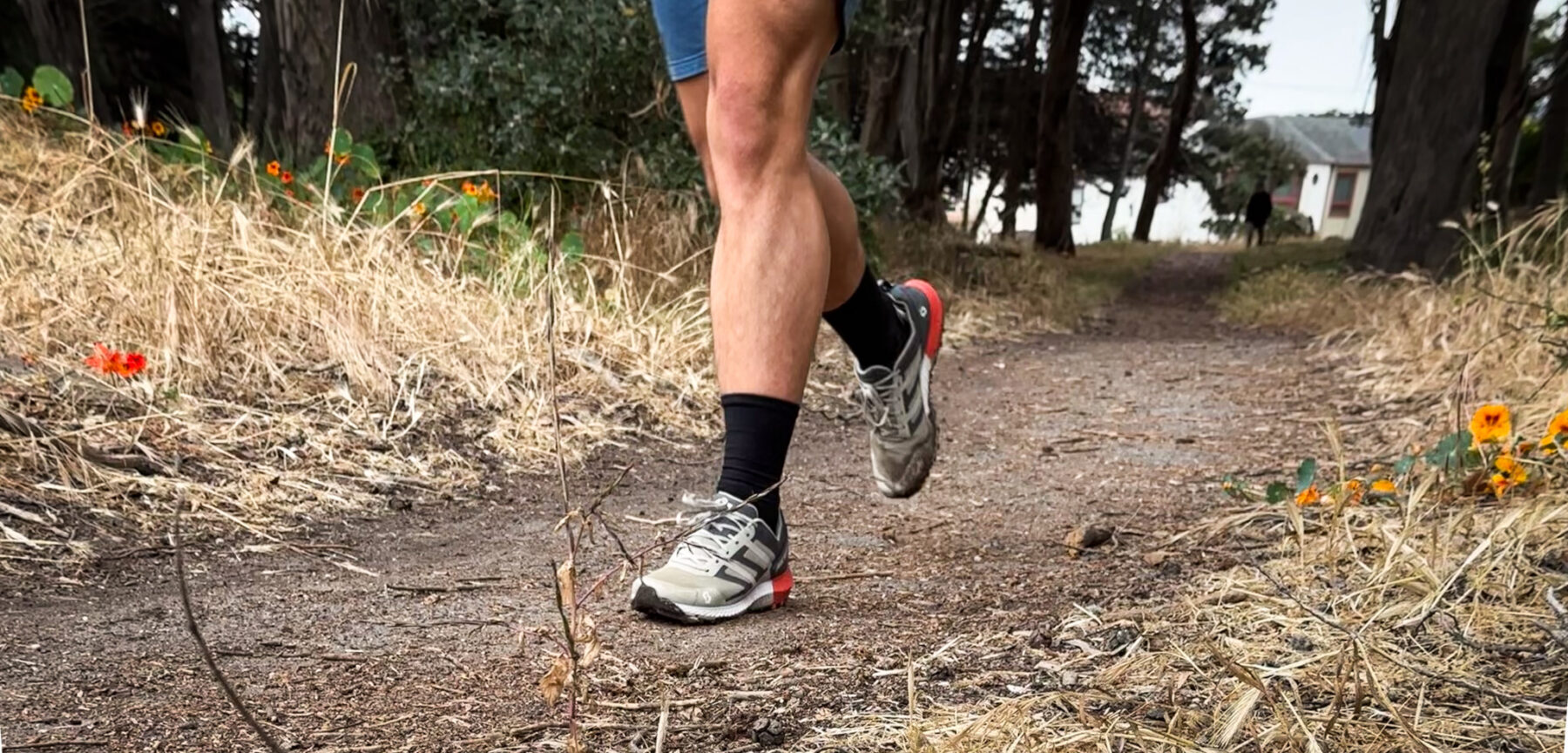
Getting let down by a shoe that overpromises is a terrible feeling. Disappointment can breed an unhealthy suspicion that slowly eats away at trust, leading runners to spiral into a pattern of skittishness. I’ve experienced this first hand. For years I’d only run in one specific model of shoe, too afraid to risk putting my foot in something else for too long. It took a model similar to the Kinabalu 2 to eventually break this cycle. This shoe is conventional, predictable, and, in my opinion, as advertised. Moving forward, I’ll likely keep the Kinabalu 2 in my rotation as an option for short-to-middle-distance social runs that don’t demand any specialization. That’s the bulk of my training these days, so I expect the Kinabalu 2 to get quite a bit of use.
Durability
I’m of the mind that versatility necessarily implies durability. If brands position a shoe to be worn across a bunch of different settings, I think they should prepare it to do so by investing in its build quality. Though I only have around 40 miles in the Kinabalu 2 so far, Scott seems to have heeded this (very unsolicited) advice. The shoe’s mesh upper is still pretty much unblemished aside from minor creasing; its midsole hasn’t lost a perceptible amount of energy return; and its outsole is still abrasion-free. If for whatever reason the Kinabalu 2 starts to show major signs of wear in the coming weeks or months, I’ll make sure to update this section.
Who’s It For?
The Kinabalu 2 is one of the few shoes I’ve tested in recent memory that, for the most part, feels and performs as advertised. As a legitimately well-rounded model, its audience is vast. Folks new to trail running will likely find it to be an approachable option that doesn’t exclude most foot shapes or running styles. At the same time, more advanced runners should be able to appreciate its simple yet smart construction and ability to navigate most terrain types. As a generalist model, it can function as your sole pair of trail shoes (especially if your runs rarely push past ~15 miles) or perform more of a utility role within a larger shoe quiver.
Folks coming from more cushioned, maximal models might need a bit of time for their feet to adapt to the Kinabalu 2’s distinctively firm midsole, but once they do, they’ll benefit from a ride that’s relatively stable and predictable. Additionally, the Kinabalu 2 should fit most foot shapes, apart from the extremely wide.
Bottom Line
“Versatility” is common parlance in the footwear industry, a buzzword that’s more often than not used to obscure a shoe’s lack of purpose rather than describe it. But most examples that fall into this camp, known as “generalists,” can offer advantages over shoes conceived specifically for a given surface / distance — when designed thoughtfully. Scott’s Kinabalu 2 is characterized by a workmanlike construction that’s unpretentious about what it is — a well-rounded trail shoe free of surprises that aims to deliver in a bunch of different settings.

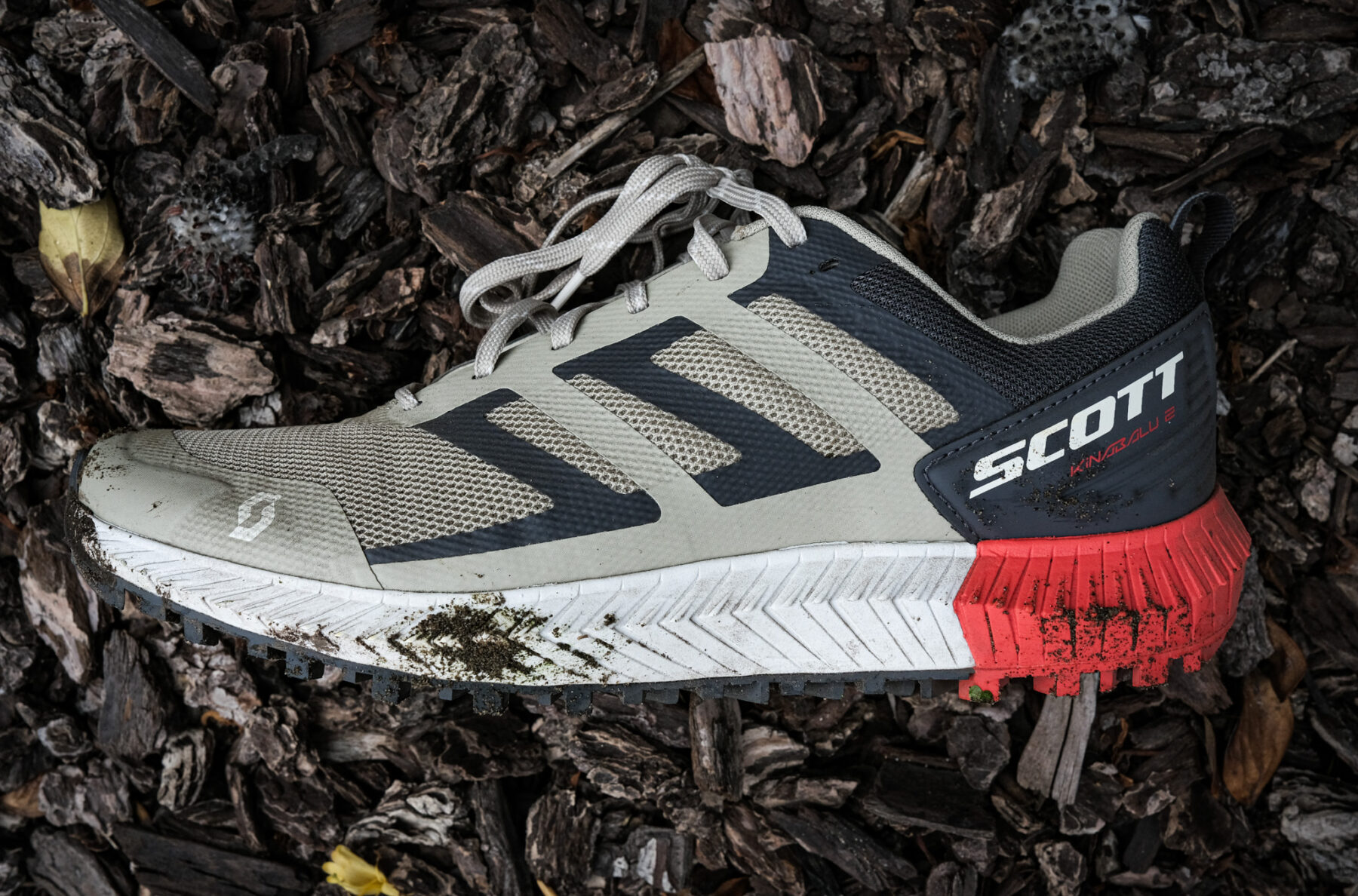

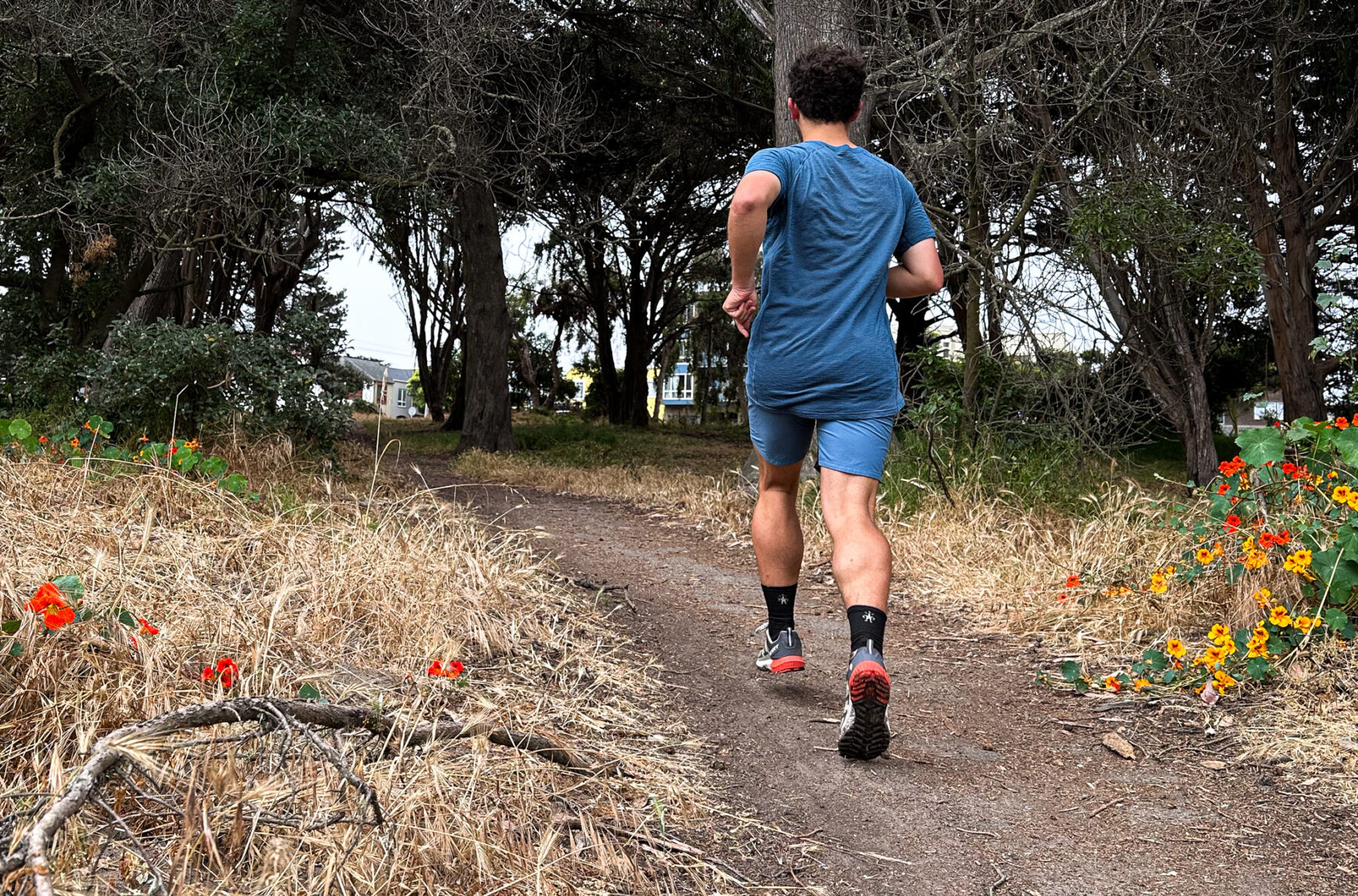

Thank you for this excellent review, very eloquently written, easy to follow and actually useful!
Comprehensive reviews. I have found the shoes to quite robust during my light trail running. The uppers are tougher than your average light trail shoe, also the sizing seems spot on. I usually wear Inov8 shoes and the sizing is comparable with them, including width wise. Thus I am very happy with my purchase and would consider purchasing other Scott products.
I used these going up Tryfan in Wales which is basically a mass of boulders. Their durability really impressed me.